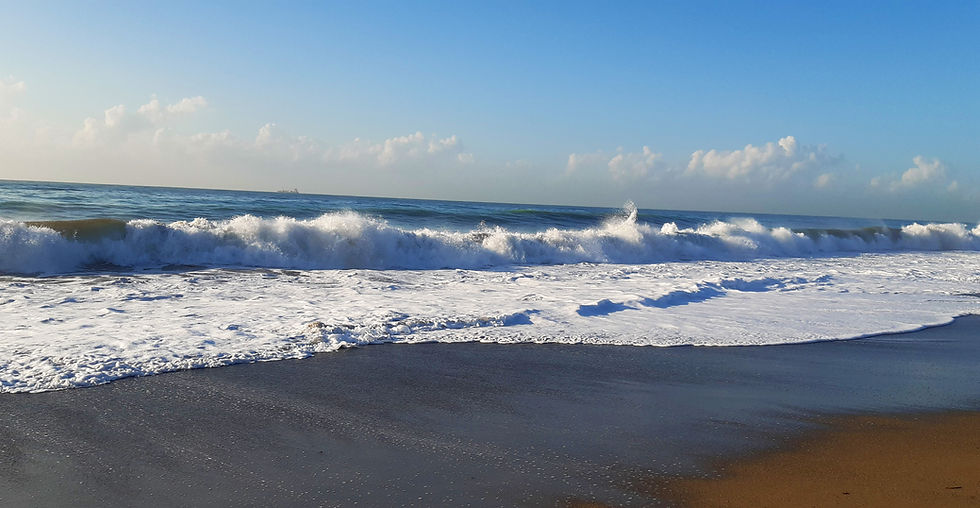Eco-wins!
- Susie Csorsz Brown
- Apr 20, 2022
- 4 min read
What have our environmental efforts accomplished?
Tomorrow is Earth Day. I’ve spent time this month, focusing on some of the things you can do as a family to make a positive environmental difference. Here, let’s look at some of the Environment wins we have seen over the last little while.
1. One of the greatest global environmental concerns is the accelerated build-up of waste. Due to creative and innovative ideas, people have been motivated to make change happen in this area. This is a story about a woman making a huge dent in the pile of plastic generated in her country. She’s developed a way to make bricks that are stronger than concrete, created completely from recycled plastic.
Sure, plastic can be recycled, but only to a point. After that, it becomes an addition to an ever-growing garbage pile. With this woman’s innovation, the pile of bricks grows bigger instead.
Around the globe, more and more countries are enacting legislation reducing growing plastic pollution. From banning Styrofoam to limited single-use plastics, to pausing permits on plastic manufacturing plants, the world is in agreement when it comes to the need to tackle plastic pollution.
2. So much of our planet is covered with water. Under that water’s surface, an unimaginable volume of life teems … until we destroy the places these animals live. Coral reefs harbor the highest biodiversity of any ecosystem on the planet, and directly support over 500 million people worldwide. Over 64% of the world’s coral reefs lie in developing countries. We can undo what we have wrought, thankfully. Humans aren’t the only wrecking balls, for sure. Ma Nature can throw in a cyclone or hurricane or two and the next thing you know, the tropical reef or an otherwise prime underwater habitat becomes a barren wasteland. Thanks to valiant efforts on the part of many an NGO, we see huge growth in previously-damaged coral reef areas.
3. The pursuit of fossil fuels is wreaking havoc on our green orb. Thankfully, more and more countries and other entities are realizing there is more harm there than good. Greenland’s government declared that it would no longer issue licenses for oil and gas exploration. Harvard announced it would stop investing in fossil fuels. Several oil pipeline permits were revoked. Shell, one of the largest oil companies in the world was slapped with an order to cut their emissions by 45% by 2030. This is great news for our planet!
4. Renewable energy is making huge strides, contributing to more and more power grids.
Wind: The Empire State Building (and all others in the Realty trust) are now completely powered by wind.
Solar: the price of solar energy in the U.S. dropped 89% in the last ten years. It is now actually less expensive to build a solar farm than to build a new coal plant, making solar the most economic option for generation of energy. It also gets less expensive the more capacity there is. This year, United States could see a record amount of new wind energy (27 gigawatts) coming online, as well as twice as much utility-scale solar (44 gigawatts) compared to last year, and six times as much energy storage (8 gigawatts). Other countries do even better with their national renewable energy usage. Norway (45% hydropower), Brazil (32% biofuel and waste energy) and New Zealand (25% wind and solar) are the top three for renewable energy usage.
Meanwhile, 28% of U.S. coal plants are projected to close by 2035. https://www.euronews.com/green/2021/08/02/which-country-is-the-world-leader-in-renewable-energy-in-2021
5. It’s not just cars and planes that emit greenhouse and carbon emissions; buildings do too! To meet climate change mitigation measures, we need to ensure new building project embrace ‘green’ practices .. and we need address these same features in existing building structures, too. By investing in ‘zero carbon’ buildings, we can reduce reliance on fossil fuels, improve efficiencies, and increase efficiency of buildings. The capabilities are there; we need to push for more zero carbon buildings and communities.
6. A great way to reduce emissions is to embrace using an electric or hybrid car. Electric and hybrid cars outsell fuel-powered vehicles in all of the EU, and these eco vehicles are gaining a foothold in other countries as well.
7. One of the best warriors against greenhouse gas emissions is a forest. Forestry and sustainable land use is a big part of the global commitment to rectifying our current climate crisis. Not only that but one of the adverse effects of the forest industry is the loss of biodiversity, migration of wildlife and ecological imbalances, as well as soil erosion, flooding and more. Securing forests mitigates these negative effects, as well as allows for continuation of indigenous and traditional ways of life.
The world’s huge demand for wood, paper, glue and agriculture products has led to some shocking and unsustainable (mis)management of forests. Working with industry and consumers to promote sustainable use of the world’s forests is slowly, slowly slowing the rate of loss of our forests.
8. This past year, due in large part to the support of countless NGOs and governments, as well as human intervention, a number of animals were moved from ‘endangered’ category to ‘vulnerable’ including the giant panda, as well as 4 kinds of tuna. Several other species who were very close to being extinct and are now flourishing include the peregrine falcon, sea otters, and we have also seen an increase in the numbers of the blue whales, though they are still considered endangered.
These are all fantastic steps in the right direction. We have made applaudable achievements. Hopefully this renews your energy and enthusiasm to continue making a difference, and to continue to encourage your family to stay involved and make a positive difference for the environment. Ma Nature could really use the hand.



Comments